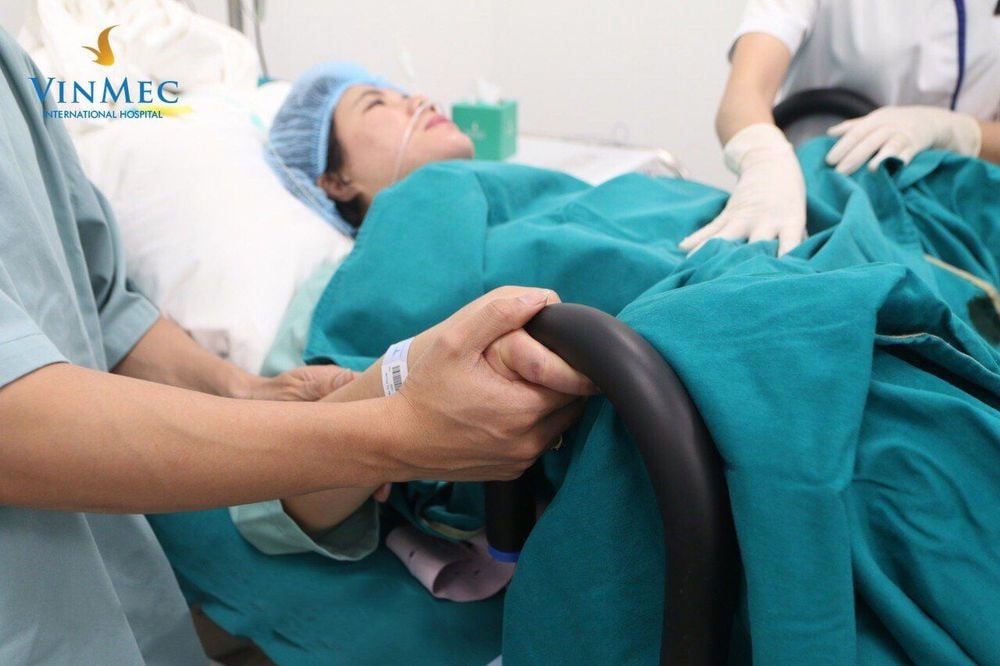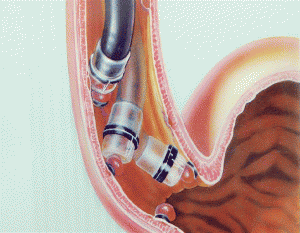This is an automatically translated article.
Posted by Doctor Nguyen Thi Hoai Nam - Department of Surgical Anesthesia, Vinmec Central Park International General HospitalSpinal anesthesia is a method of regional anesthesia, by introducing an appropriate amount of local anesthetic into the subarachnoid space. Usually this anesthetic has a large concentration, when the anesthetic is mixed with the cerebrospinal fluid, it will affect the nerve roots, causing loss of sensation and motor paralysis. The purpose of this technique is to provide anesthesia or analgesia for operations in the lower abdomen (below the navel) and lower extremities (legs). To avoid injury to the spinal cord, a lumbar puncture is usually performed from the 3rd lumbar segment down.
1. Spinal anesthesia technique
Like epidural anesthesia, spinal anesthesia is also a high-level technique, only performed in hospitals with sufficient equipment for anesthesia and resuscitation and only an anesthesiologist has been trained. New training and experience are carried out.
Prepare tools and equipment when performing spinal anesthesia:
A sterile anesthetic kit including 1ml, 5ml syringes, 25G, 27G spinal needles, and holes Anesthesia: Lidocaine 2% local anesthetic topical, Bupivacaine 0.5%, Levobupivacaine 0.5%, Ropivacaine 0.5% Spinal anesthesia Vasoconstrictors of the ephedrine, phenyledrine groups Sedatives Anesthesia resuscitation intravenous volume replacement solutions. Intubation equipment Monitoring continuously monitors pulse, blood pressure, electrocardiogram, oxygen saturation Oxygen nasal breathing In general, spinal anesthesia is a technique that requires good cooperation of the patient with the anesthesiologist. passionate about. In addition, most patients will be awake during the procedure as well as during the surgery. So they can still hear, see, and even feel pain when the doctor inserts the anesthetic needle, especially if the needle touches the nerve roots. Therefore, clearly explaining the technique of spinal anesthesia, as well as the possible situations during the surgery will make the patient more secure, thereby better cooperating with the surgical team. However, subsequent use of sedatives is still important if the patient is very anxious.
2. Indications for spinal anesthesia

Gây tê tủy sống trong mổ đẻ
2.1. Orthopedic trauma surgery Spinal anesthesia technique is often performed in orthopedic surgery from the pelvis to the lower extremities: hip replacement, combined femur, shin bone, ankle, table foot, knee arthroscopy...
2.2. Urological surgery Most urological surgeries can be performed under spinal anesthesia. The reason is that this method helps limit blood loss and numbs enough time for surgery.
Renal or adrenal surgeries where the incision is raised should pay attention to the necessary pain relief to the D6 and D7 dorsal vertebrae - areas that require careful monitoring of respiratory and circulatory function.
2.3. Gynecological surgery Currently, most of the obstetric and gynecological surgeries can be done well after spinal anesthesia. However, it is necessary to prevent complications that cause hypotension when giving anesthesia to pregnant women or caesarean sections.
2.4. Abdominal surgery Operations in the lower abdomen: Appendiceal, hernia, pelvic and anorectal surgery; Upper abdominal surgery: Can be performed under spinal anesthesia but must be combined with general anesthesia and attention to complications of bradycardia, hypotension and respiratory failure. Rarely now. 2.5. Pain relief during and after surgery Currently, spinal anesthesia is rarely used to relieve pain during and after surgery, except for the case of inserting a catheter into the spinal cord. Peripheral anesthesia is increasingly replacing epidural and spinal anesthesia. Low-dose spinal anesthesia is also indicated to relieve pain during childbirth for women who give birth naturally..
3. Contraindications

Chống chỉ định với người thiếu khối lượng tuần hoàn lớn
Do not conduct spinal anesthesia in the following cases:
The patient is allergic to anesthetic; Lack of large circulating volume; The area of skin on which the anesthetic needle is intended to be inserted becomes infected; Serious systemic infections; Spinal deformity (because in some cases, it is necessary to take a scan of the spine to determine the correct way to enter); Hemophilia or are taking anticoagulants; Epilepsy or nervous system-related disease (spondylolisthesis or polyneuritis); Cardiovascular disease such as: Arrhythmia, low or high blood pressure, heart failure, recent myocardial infarction... Increased intracranial pressure The patient disagrees or the operator is inexperienced or lacks emergency resuscitation facilities. assist
4. Complications of spinal anesthesia

Ngừng thở là một biến chứng nặng khi dùng nhiều thuốc tê vào tủy sống hoặc gây tê quá cao
4.1. Low blood pressure This is a common complication, mainly due to inhibition of the sympathetic system. Precautionary measures should be taken by administering fluids before surgery, using 0.9% NaCl or Ringer's lactate solution 500 - 1000ml. In addition, during surgery, it is necessary to closely monitor blood pressure to detect hypotension early and promptly treat with rapid infusion of fluids and use of vasopressors ephedrine or phenyledrine.
4.2. General spinal anesthesia This is a serious complication that occurs when too much anesthetic is injected into the spinal cord or the anesthetic is too high. Symptoms include:
Paralysis of the whole body; Stop breathing; Severe drop in blood pressure; The drug spreads to the brain causing loss of consciousness. The commonly used management measures are respiratory emergency, intubation, mechanical ventilation, intravenous fluids, vasopressors and cardiac support.
4.3. Respiratory Hypoventilation: A common complication of high levels of spinal anesthesia. It is caused by blocking the motor fibers of the abdominal and chest wall muscles. The patient will have irregular breathing, decreased breathing, and decreased oxygen saturation. Treat by breathing oxygen, at the same time remind the patient to breathe; Apnea: Due to decreased circulatory flow, profound hypotension or due to anesthesia of the whole spinal cord and inhibition of the diaphragmatic nerve. Symptoms include respiratory arrest, decreased oxygen saturation, cyanosis, and black surgical site blood. Treatment is usually endotracheal intubation and artificial ventilation. 4.4. Nerve damage is rare, originating from two sources:
Anesthesia needle punctures nerve tissue; Drugs injected into the spinal cord These lesions often occur early, accompanied by a sharp pain. Therefore, if the patient complains of pain, the needle must be removed and the injection stopped. Stroke damage nerve roots, back pain or headache, can recover after 1-12 weeks or become permanent damage.
In addition, there is some late neurological damage due to arterial occlusion, arachnoiditis or compression hematoma. This type is difficult to diagnose and treat, and carries the risk of long-term consequences.
4.5. Headache The main cause is cerebrospinal fluid escaping through the needle hole. Headaches often change according to position: sitting up quickly causes pain in the top and sides of the temples, lying down or keeping the head low will reduce pain.
Headaches can be relieved with pain relievers, lying down, drinking plenty of fluids or fluids.
In case of severe pain, the above treatment is not effective, can pump autologous blood into the epidural space, sealing the dural perforation.
To minimize this complication, use as small a needle as possible (27G, 29G)
4.6. Other complications Other complications that may occur include: tremors, vomiting and nausea, urinary retention, or infection of the needle puncture site, inflammation of the pulp, brain or meninges...
In general, spinal anesthesia is used. Survival is a technique that requires good cooperation between the patient and the anesthesiologist. Therefore, the anesthesiologist needs to clearly explain the advantages and disadvantages of the method, prepare the patient well, and at the same time follow the correct procedure to ensure maximum safety for the patient.
Currently, Vinmec International General Hospital has applied spinal anesthesia under ultrasound guidance, increasing efficiency and limiting complications for patients.
To learn more, please call hotlines of hospitals or register for an online consultation with Vinmec HERE.














